 |

 |
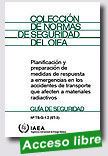 |
Planificación y Preparación de Medidas de Respuestas a Emergencia en los Accidentes de Transporte que afectan a Materiales Radiactivos OIEA Colección de normas de seguridad, 2009, 141 p.
This Safety Guide provides guidance on various aspects of emergency planning and preparedness for dealing effectively and safely with transport accidents involving radioactive material, including the assignment of responsibilities. It reflects the requirements specified in Safety Standards Series No. TS-R-1, Regulations for the Safe Transport of Radioactive Material, and those of Safety Series No. 115, International Basic Safety
|
Standards for Protection against Ionizing Radiation and for the Safety of Radiation Sources.
Contents: 1. Introduction; 2. Framework for planning and preparing for response to accidents in the transport of radioactive material transport accidents; 3. Responsibilities for planning and preparing for response to accidents in the transport of radioactive material; 4. Planning for response to accidents in the transport of radioactive material; 5. Preparing for response to accidents in the transport of radioactive material; Appendix I: Features of the transport regulations influencing emergency response to transport accidents; Appendix II: Preliminary emergency response reference matrix; Appendix III: Guide to suitable instrumentation; Appendix IV: Overview of emergency management for a transport accident involving radioactive material; Appendix V: Examples of response to transport accidents; Appendix VI: Example equipment kit for a radiation protection team; Annex I: Example of guidance on emergency response to carriers; Annex II: Emergency response guide.
Extraído de:
http://www-pub.iaea.org/MTCD/publications/PubDetails.asp?pubId=6404
|
 |
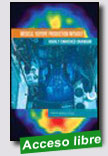 |
Medical Isotope Production Without Highly Enriched Uranium
National Research Council, 2009, 240 p.
This book is the product of a congressionally mandated study to examine the feasibility of eliminating the use of highly enriched uranium (HEU2) in reactor fuel, reactor targets, and medical isotope production facilities. The book focuses primarily on the use of HEU for the production of the medical isotope molybdenum-99 (Mo-99), whose decay product, technetium-99m3 (Tc-99m), is used in the majority of medical diagnostic imaging procedures in the United States, and secondarily on the use of HEU for research and test reactor fuel. The supply of Mo- |
99 in the U.S. is likely to be unreliable until newer production sources come online. The reliability of the current supply system is an important medical isotope concern; this book concludes that achieving a cost difference of less than 10 percent in facilities that will need to convert from HEU- to LEU-based Mo-99 production is much less important than is reliability of supply.
Extraído de:
http://www.nap.edu/catalog.php?record_id=12569#description
|
 |
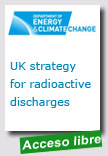 |
UK strategy for radioactive discharges
Department of Energy & Climate Change, July 2009, 165 p.
Radioactive waste resulting from practices involving radioactive substances is discharged into the environment from nuclear licensed sites and non-nuclear operators such as universities and hospitals. Discharges may be in the form of gases, mists and dusts or liquids. Site operators are required to ensure that the authorised discharge limits are met.
The revised UK Strategy builds on and widens the scope of the 2002 Strategy bringing all information on radioactive discharges into one place. The Strategy covers the period to 2030 and
|
includes aerial as well as liquid discharges from operational and decommissioning activities and includes both the nuclear and non-nuclear sectors. It sets out the progress made on reducing discharges and emissions to the environment; describes, at the sectoral level, the outcomes which are expected to be achieved and by when; and sets a strategic framework for addressing radioactive discharges over the next 20 years.
The Strategy demonstrates how the UK is implementing its obligations in respect of the UK’s commitments on radioactive discharges as a Contracting Party to the OSPAR Convention and forms the UK’s national plan on how we will achieve the overall and intermediate objectives of the OSPAR Radioactive Substances Strategy. The intended effects of the UK Strategy are:progressive and substantial reductions in radioactive discharges taking into account any uncertainties; progressive reductions in concentrations of radionuclides in the marine environment from radioactive discharges such that by 2020 they add close to zero to historic levels; progressive reductions in human exposures to ionising radiation resulting from radioactive discharges, as a result of planned reductions in discharges; and
delivery of the UK’s commitments to OSPAR without compromising the UK energy policy.The Strategy also highlights the move in England and Wales from Best Practicable Means (BPM) and Best Practicable Environmental Options (BPEO) to Best Available Techniques (BAT). The move to BAT will deliver the equivalent level of environmental protection as BPM and BPEO and is consistent with the terminology of the environmental protection regimes of the other Contracting Parties and other regimes in England and Wales. Scotland and Northern Ireland will continue to apply BPM and BPEO.
Extraído de:
http://www.decc.gov.uk/en/content/cms/what_we_do/uk_
supply/energy_mix/nuclear/issues/radioactivity/radioactivity.aspx
Annex A: acronyms, abbreviations and radionuclides
Annex B: Impact Assessment of revisions to UK Strategy for radioactive discharges
|
 |
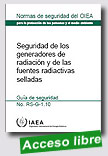 |
|
Extraído de:
http://www-pub.iaea.org/MTCD/publications/PubDetails.asp?pubId=7518
|
 |
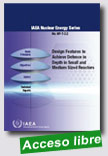 |
Design Features to Achieve Defence in Depth in Small and Medium Sized Reactors (SMRs)
IAEA Nuclear Energy Series, 2009, 264 p.
This publication presents the state of the art in the design approaches used to achieve defence in depth in pressurized water reactors, pressurized light water reactors, cooled heavy water moderated reactors, high temperature gas cooled reactors, sodium cooled and lead cooled fast reactors, and non-conventional designs within the small and medium sized reactors (SMR) range. Particular attention is given to those approaches that eliminate accident initiators or prevent accident |
consequences by incorporating inherent and passive safety features and passive systems into the safety design concepts of such reactors. The information presented in this publication could be used for assessment studies of innovative nuclear energy systems involving SMRs, as well as in evaluating the overall technical potential of innovative SMRs in Member States.
Extraído de:
http://www-pub.iaea.org/MTCD/publications/PubDetails.asp?pubId=8094 |
 |
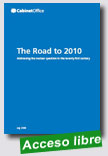 |
The Road to 2010 - Addressing the nuclear question in the twenty first century
Prime Minister Cabinet Office (UK), July 2009, 52 p.
The Prime Minister has published The Road to 2010 – Addressing the nuclear question in the twenty first century, which sets out a strategy that will lead the UK into the 2010 Nuclear Non-Proliferation Treaty (NPT) Review Conference and beyond. It brings together the nuclear issues that are facing the world today and sets out how the UK will play a leading role in tackling the strategic challenges of the expansion of civil nuclear power, nuclear security, non-proliferation, and the reduction and eventual elimination of all nuclear weapons.
|
Extraído de:
http://www.cabinetoffice.gov.uk/reports/roadto2010.aspx
Press release
|
 |
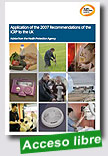 |
Application of the 2007 Recommendations of the ICRP to the UK
Health Protection Agency (UK), July 2009, 76 p.
The Health Protection Agency (HPA) advises UK bodies with responsibility for protection against radiation on the applicability to the UK of recommendations issued by the International Commission on Radiological Protection (ICRP). After a consultation process lasting several years, the ICRP issued new recommendations for a system of radiological protection in 2007. These recommendations replace the previous recommendations issued in 1991.
|
Following a period of public consultation, the Health Protection Agency has developed its advice on the application of the new recommendations of the International Commission on Radiological Protection to the UK. The HPA welcomes the ICRP recommendations, which represent an update, consolidation and development on the previous recommendations. Overall they do not imply any major changes to the system of protection applied in the UK.
Extraído de:
http://www.hpa.org.uk/webw/HPAweb&HPAweb
Standard/HPAweb_C/1246519363993?p=1199451989432
|
 |
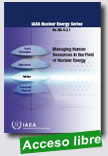 |
Managing Human Resources in the Field of Nuclear Energy
IAEA Nuclear Energy Series, 2009, 90 p.
This publication addresses aspects of managing human resources in the nuclear field. These include ensuring that individuals have the competence needed to perform their assigned tasks; organizing work effectively; anticipating human resource needs; and monitoring and continually improving performance for the entire lifecycle of nuclear facilities. The aim is to increase understanding in IAEA Member States, including those countries embarking on a new nuclear power programme, of these aspects. The publication provides guidance to decision- |
makers and senior managers responsible for the reliable supply of a competent workforce for the nuclear field, and to line managers at the nuclear facilities who are responsible for the training, qualification, and performance of their personnel, as well as to human resource specialists in the nuclear field.
Extraído de:
http://www-pub.iaea.org/MTCD/publications/PubDetails.asp?pubId=8121
|
 |
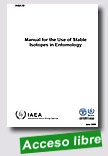 |
Manual for the Use of Stable Isotopes in Entomology
IAEA, June 2008, 78 p.
This publication was originally intended as an update to the Laboratory Training Manual on the Use of Nuclear Techniques in Insect Research and Control (Third Edition) which was published in 1992. It focused mainly on the use of radionuclides in entomological research and the application of gamma irradiation to entomological problems, in particular for Sterile Insect Technique (SIT) programmes.
Since the publication of the third edition of this manual the global scientific environment has changed dramatically, in part due to
|
technological advances, evident from the widespread use of molecular techniques and the ubiquitous use of computing. There have also been significant changes in the external political environment which have had an impact on the day to day scientific work. From an environmental perspective it is no longer acceptable to release radionuclides into the field, and it has become increasingly expensive to use them in the laboratory due to essential safety considerations. From a social perspective the perceived risk associated with using radionuclides is deemed far greater than it may have been in the past. So, as with many technologies, it is the changes in the external political and social environment which has led to a shift in usage. The decline in the use of radionuclides in entomological research is a result of pressures from the external environment rather than a reflection of their scientific usefulness.
Extraído de:
http://www-pub.iaea.org/MTCD/publications/PDF/IAEA_SI_web.pdf |
 |
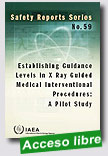 |
Establishing Guidance Levels in X Ray Guided Medical Interventional Procedures: A Pilot Study IAEA Safety Reports Series, 2009, 147 p.
The number of interventional procedures guided by X ray imaging is increasing every year. Given the medical necessity of these procedures, it is vital that public confidence in these techniques is not undermined by the adverse consequences of high radiation doses. Guidance levels have proved to be a useful tool for optimization in general radiography, since they provide the opportunity of comparing the radiation doses that radiologists deliver to patients with those of their colleagues. |
| However, the possibility of establishing guidance levels as a tool for optimization of interventional procedures has been the subject of scientific debate. The research described in this publication has brought the debate closer towards a common understanding and consensus. Moreover, it has demonstrated its value in practice, by identifying hospitals with higher doses and then achieving a substantial dose reduction by means of the optimization of protection implemented during the project in these hospitals.
Extraído de:
http://www-pub.iaea.org/MTCD/publications/PubDetails.asp?pubId=8025
|
| |
|
|
